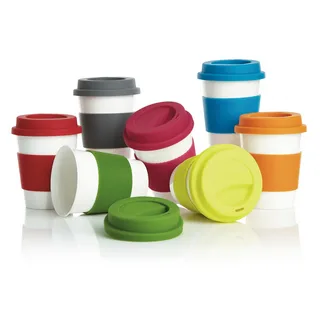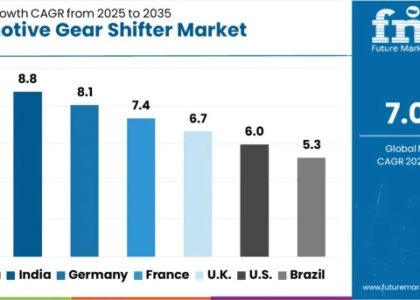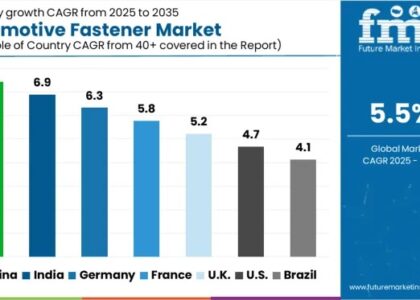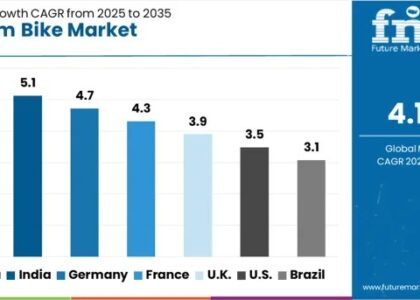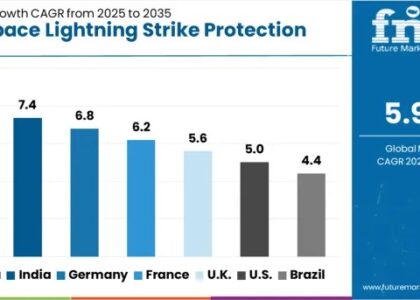Over the forecast period of 2022 to 2032, the global sales of PLA cups are expected to expand at a compound annual growth rate (CAGR) of about 5.2%. The market is expected to grow as PLA cups become more widely used in a variety of end-use verticals, including bars, restaurants, hotels, and cages.PLA cups are a special kind of biodegradable cup made of polylactic acid (PLA), a biopolymer. Corn or other starchy plants are used to make this bio-based plastic (PLA). Because of its superior recyclability and eco-friendliness, PLA cups are a great substitute for traditional plastic cups and are simple to produce.
PLA cup demand has increased significantly over the past few years as a result of growing customer preference for biodegradable products and growing industry usage.
Request Sample Report: https://www.futuremarketinsights.com/reports/sample/rep-gb-9213
PLA cups are unusual biodegradable cups made from polylactic acid, a biopolymer (PLA). PLA is a bio-based plastic manufactured from starchy plants such as corn. PLA cups are simple to make and are a great alternative to traditional plastic cups because of their high recyclability and environmental friendliness. PLA cup demand has increased significantly in recent years as a result of growing consumer demand for biodegradable products and increased usage across numerous industries. Milkshakes, carbonated beverages, iced tea and coffee, fruit juices, alcoholic beverages, ice creams, and smoothies are all good candidates for these cups.
Market Competition
Some of the key participants present in the global PLA cup market include Biopac (UK) Ltd, Celebration Paper & Plastics Ltd., Avani Eco Hub, Eco-Products, Inc., Betterearth Llc, and Green Paper Products among others.
The global proliferation of COVID-19 has had a negative impact on biodegradable cup sales. The foodservice industry’s demand for biodegradable cups has decreased as a result of government-imposed food supply-chain delays and travel restrictions. The closure of cafeterias, quick service restaurants, and motels during the pandemic had a significant impact on sales of biodegradable cups. However, during the COVID-19, the growth of takeaways and online food delivery services resulted in movement restrictions, necessitating the use of biodegradable cups. As the biodegradable cup market begins to rebound post-COVID, the market is expected to gain traction in the next years.
Purchase Now to Access Segment-specific Information and uncover Key Trends, Drivers, and Challenges: https://www.futuremarketinsights.com/checkout/9213
Growth Drivers in the PLA Cup Industry:
- Rising Eco-Conscious Consumer Demand: Increasing awareness and preference among consumers for eco-friendly and biodegradable products, coupled with a shift away from traditional plastics, are driving the growth of PLA cups.
- Diverse End-Use Verticals Adoption: The expanding use of PLA cups in a variety of sectors, including cafes, hotels, restaurants, and bars, is a key driver. Versatility in applications enhances market penetration and sustains demand.
- Government Regulations and Plastic Bans: Stringent regulations and bans on single-use plastics in various regions contribute to the adoption of PLA cups as a sustainable and compliant alternative, fostering market growth.
- Inherent Recyclability and Sustainability: PLA cups, derived from plant-based sources like corn, offer excellent recyclability and are considered more sustainable than traditional plastic cups, aligning with global efforts toward environmental conservation.
- Expanding Application Scope: The versatility of PLA cups in serving a wide range of beverages, including milkshakes, carbonated drinks, iced tea, alcoholic beverages, and more, contributes to their growing popularity and adoption across diverse beverage industries.
Innovations in the Market:
- Advanced Biopolymer Formulations: Ongoing research and development focus on enhancing the properties of PLA cups through advanced biopolymer formulations, aiming to improve durability, heat resistance, and overall performance.
- Customizable and Branded PLA Cups: Innovations in printing technologies allow for customizable and branded PLA cups, catering to businesses’ marketing needs while promoting sustainability through personalized and eye-catching designs.
- Intelligent Packaging Solutions: Integration of smart packaging technologies, such as temperature-sensitive indicators or QR codes for product information, enhances the functionality of PLA cups, offering added value to consumers and businesses alike.
- Expanded Size and Shape Options: Ongoing innovation includes the introduction of PLA cups in various capacities, meeting diverse customer needs. This includes sizes up to 10 oz, catering to different beverage preferences and industry requirements.
- Collaborations for Circular Economy Initiatives: Companies are increasingly collaborating to establish and promote circular economy initiatives, focusing on the entire lifecycle of PLA cups—from sourcing sustainable materials to collection and recycling—contributing to a more sustainable and closed-loop system.
Request Report Methodology: https://www.futuremarketinsights.com/request-report-methodology/rep-gb-9213
Key Segments Profiled in the PLA Cup Industry Survey
By Capacity:
- Up to 10 oz
- 10 to 15 oz
- 15 to 20 oz
- 20 to 25 oz
By Sales Channel:
- Manufacturers (Direct Sales)
- Distributors
- E-retail
- Retailers
- Hypermarkets
- Supermarkets
- Convenience Stores
- Specialty Stores
- Discount Stores & Warehouse
By Application:
- Carbonated beverages
- Milkshakes
- Iced Tea/Coffee
- Fruit Juices
- Alcoholic beverages
- Smoothies
- Ice Creams
- Other Food & Beverage Products
By End Use:
- Hotels
- Restaurants & Motels
- Bars & Lounges
- Cafes
- Others
Author:
Ismail Sutaria (Lead Consultant, Packaging and Materials) has over 8 years of experience in market research and consulting in the packaging & materials industry. Ismail’s strength lies in identifying key challenges faced by the client and offering logical and actionable insights to equip the clients with strategic decision-making power.
Ismail has been an instrumental part of several transformational consulting assignments. His key skills include competitive benchmarking, opportunity assessment, macroeconomic analysis, and business transformation advisory. Ismail is an MBA holder in Marketing and has a Bachelor’s Degree in Mathematics.
About Future Market Insights (FMI)
Future Market Insights, Inc. (ESOMAR certified, recipient of the Stevie Award, and a member of the Greater New York Chamber of Commerce) offers profound insights into the driving factors that are boosting demand in the market. FMI stands as the leading global provider of market intelligence, advisory services, consulting, and events for the Packaging, Food and Beverage, Consumer Technology, Healthcare, Industrial, and Chemicals markets. With a vast team of over 400 analysts worldwide, FMI provides global, regional, and local expertise on diverse domains and industry trends across more than 110 countries.
Contact Us:
Future Market Insights Inc.
Christiana Corporate, 200 Continental Drive,
Suite 401, Newark, Delaware – 19713, USA
T: +1-845-579-5705
For Sales Enquiries: sales@futuremarketinsights.com
Website: https://www.futuremarketinsights.com
LinkedIn| Twitter| Blogs | YouTube


